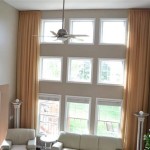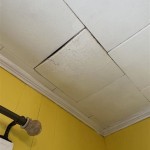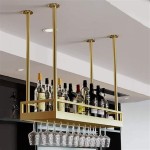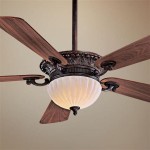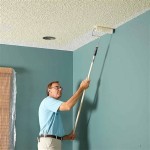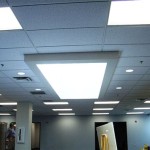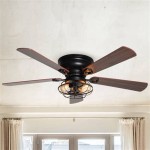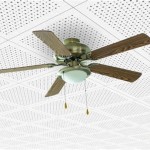One-Story Vaulted Ceiling House Plans: Maximizing Space and Light
One-story house plans with vaulted ceilings are gaining popularity for their ability to create a sense of spaciousness and visual interest in a relatively compact footprint. This design approach offers a blend of accessibility, efficiency, and aesthetic appeal, making it an attractive option for various homeowners. Whether it's a modern minimalist design or a more traditional craftsman style, incorporating a vaulted ceiling can significantly enhance the living experience.
A vaulted ceiling, by definition, rises above the standard ceiling height, creating a more expansive vertical dimension within a room. This increased volume can dramatically improve the feeling of openness, counteracting the potential for a single-story home to feel cramped or confined. The effect is often amplified by the inclusion of strategically placed windows and skylights, which flood the space with natural light and blur the boundaries between indoor and outdoor environments.
Key Benefits of One-Story Vaulted Ceiling House Plans
Several compelling advantages make one-story vaulted ceiling house plans a desirable choice for many potential homeowners. These benefits range from improved aesthetics to enhanced energy efficiency and increased property value.
Enhanced Aesthetics and Perceived Space
The most immediate and noticeable benefit of a vaulted ceiling is its impact on the visual appeal of the home. The increased ceiling height creates a more dramatic and impressive space, transforming an ordinary room into something extraordinary. This architectural feature can be particularly effective in smaller homes, where it can counteract the feeling of confinement and create a more open and airy atmosphere. The vaulted ceiling also provides an opportunity to showcase interesting design elements, such as exposed beams, decorative lighting fixtures, and statement artwork. Furthermore, the addition of a vaulted ceiling often leads to a greater flexibility in interior design, allowing for taller furniture pieces and larger decorative elements that would otherwise be impossible to incorporate in a room with standard ceiling heights.
The perceived increase in space is not merely an illusion. By drawing the eye upward, the vaulted ceiling makes a room feel larger than it actually is. This can be particularly beneficial in open-concept living areas, where the vaulted ceiling can help to define different functional zones without the need for physical partitions. The effect can be further enhanced by using lighter color palettes and reflective surfaces, which maximize the amount of natural light and contribute to the overall sense of spaciousness.
Improved Natural Light and Ventilation
Vaulted ceilings often incorporate larger windows and skylights, which significantly increase the amount of natural light that enters the home. This is particularly important in areas with limited sunlight or where the layout of the home restricts natural light penetration. Natural light has numerous benefits, including improved mood, increased productivity, and reduced reliance on artificial lighting. The strategic placement of windows and skylights can also help to regulate the temperature of the home, reducing the need for air conditioning and heating.
Beyond increased natural light, vaulted ceilings can also improve ventilation within the home. The increased volume of air in a vaulted room facilitates better air circulation, which can help to reduce humidity and improve air quality. In warmer climates, this can be particularly beneficial, as it helps to keep the home cooler and more comfortable. The incorporation of operable windows and skylights in the upper reaches of the vaulted ceiling can further enhance ventilation, allowing for the release of hot air that rises to the top of the room.
Increased Property Value
Homes with unique architectural features, such as vaulted ceilings, often command a higher resale value than comparable homes without these features. The aesthetic appeal and perceived spaciousness of a vaulted ceiling can be a major selling point for potential buyers. In addition, the increased natural light and improved ventilation contribute to the overall desirability of the home. The addition of a vaulted ceiling can be seen as an investment that not only enhances the living experience but also increases the long-term value of the property.
The perceived value of a vaulted ceiling is often influenced by the quality of the construction and the design details. A well-executed vaulted ceiling that is seamlessly integrated into the overall design of the home will be more appealing to potential buyers than a poorly constructed or awkwardly designed vaulted ceiling. Therefore, it is important to work with experienced architects and builders who have a proven track record of designing and constructing high-quality vaulted ceilings.
Design Considerations for One-Story Vaulted Ceiling House Plans
While the benefits of vaulted ceilings are numerous, careful planning and design are essential to ensure that the vaulted ceiling is both aesthetically pleasing and structurally sound. Several factors need to be considered when designing a one-story house plan with a vaulted ceiling, including the roof pitch, the structural support, the insulation, and the lighting.
Roof Pitch and Structural Support
The roof pitch plays a significant role in determining the shape and height of the vaulted ceiling. A steeper roof pitch will result in a higher and more dramatic vaulted ceiling, while a shallower roof pitch will result in a lower and more subtle vaulted ceiling. The choice of roof pitch will depend on the overall design aesthetic of the home, as well as the structural requirements of the vaulted ceiling.
Adequate structural support is crucial to ensure the stability and safety of the vaulted ceiling. This typically involves the use of reinforced beams and trusses that are designed to carry the weight of the roof and ceiling. The structural support must be carefully engineered to withstand wind, snow, and seismic loads. It is essential to consult with a structural engineer to ensure that the vaulted ceiling is properly supported and meets all applicable building codes.
Insulation and Energy Efficiency
Proper insulation is essential to prevent heat loss in the winter and heat gain in the summer. Vaulted ceilings are particularly susceptible to heat loss because of their large surface area and proximity to the roof. Therefore, it is important to use high-quality insulation materials and to ensure that the insulation is properly installed. Options include spray foam insulation, rigid foam insulation, and fiberglass batts. The choice of insulation material will depend on the climate, the budget, and the desired level of energy efficiency.
In addition to insulation, proper ventilation is also important to prevent moisture buildup in the vaulted ceiling. Moisture can lead to mold growth and structural damage. Ventilation can be achieved through the use of ridge vents, soffit vents, or other ventilation systems. It is important to ensure that the ventilation system is properly designed and installed to effectively remove moisture from the vaulted ceiling.
Lighting and Electrical Considerations
The increased ceiling height of a vaulted ceiling necessitates careful planning of the lighting scheme. Standard ceiling fixtures may not be adequate to properly illuminate the space. Options include recessed lighting, pendant lights, track lighting, and wall sconces. The choice of lighting fixtures will depend on the desired level of illumination, the style of the room, and the placement of furniture and artwork.
Electrical wiring and outlets must be carefully planned to accommodate the vaulted ceiling. It may be necessary to run wiring through the walls or ceiling to avoid unsightly exposed wires. It is also important to consider the placement of outlets to ensure that they are conveniently located for appliances, lamps, and other electrical devices. A licensed electrician should be consulted to ensure that all electrical work is done safely and in accordance with applicable electrical codes.
Examples of One-Story Vaulted Ceiling House Plan Styles
Vaulted ceilings can be incorporated into a wide variety of architectural styles, from modern and contemporary to traditional and rustic. The specific design details of the vaulted ceiling will depend on the overall aesthetic of the home.
Modern and Contemporary Styles
In modern and contemporary homes, vaulted ceilings are often characterized by clean lines, minimalist details, and an emphasis on natural light. Exposed beams are often used to add visual interest and to create a sense of warmth. Large windows and skylights are used to maximize natural light and to create a connection to the outdoors. The vaulted ceiling may be painted in a light color to enhance the sense of spaciousness.
Modern homes with vaulted ceilings often incorporate open-concept living areas, where the kitchen, dining room, and living room are combined into a single large space. The vaulted ceiling helps to define the different functional zones within the open-concept area. The use of minimalist furniture and decorative elements further enhances the sense of spaciousness and simplicity.
Traditional and Rustic Styles
In traditional and rustic homes, vaulted ceilings are often characterized by more ornate details, such as wood paneling, decorative moldings, and exposed rafters. The vaulted ceiling may be stained or painted in a dark color to create a sense of warmth and intimacy. Fireplaces are often incorporated into the design of the vaulted ceiling to create a focal point and to add to the cozy atmosphere.
Rustic homes with vaulted ceilings often incorporate natural materials, such as wood, stone, and brick. The vaulted ceiling may be constructed from reclaimed wood or timber to add to the rustic charm. The use of handcrafted furniture and decorative elements further enhances the traditional and rustic aesthetic.

One Story House Plan With Vaulted Ceilings And Rear Grilling Porch 70582mk Architectural Designs Plans
House Plan Of The Week One Story Barndominium With 14 Foot Vaulted Ceiling Builder Magazine

Cathedral Ceiling House Plans Small W High Ceilings

Cathedral Ceiling House Plans Small W High Ceilings

One Level House Plan With Cathedral Ceilings In Living Room 860029mcd Architectural Designs Plans

Rustic House Plans Our 10 Most Popular Home
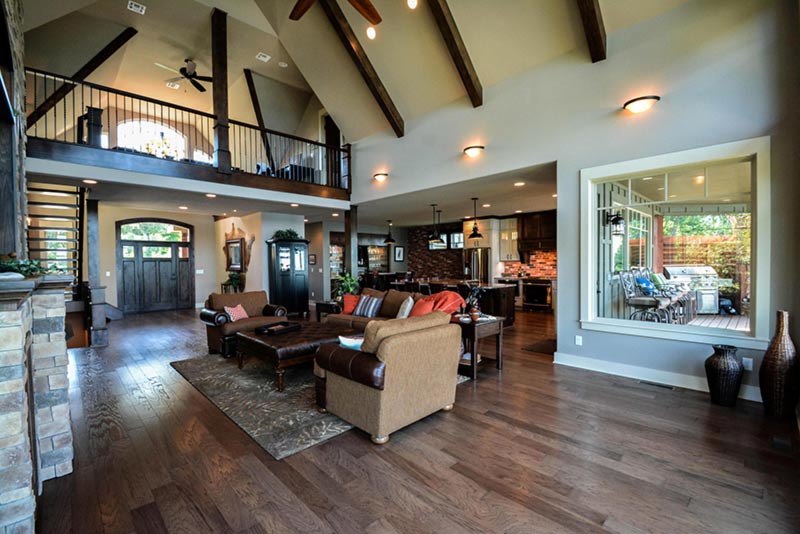
Rustic House Plans Our 10 Most Popular Home

One Story Country Ranch Style House Plan With 16 3 Cathedral Ceiling 444091gdn Architectural Designs Plans

Small House Floor Plan With Open Planning Vaulted Ceiling Three Bedrooms Area 2341 Sq Ft Plans

Ranch House Plans With Open Floor Blog Homeplans Com

